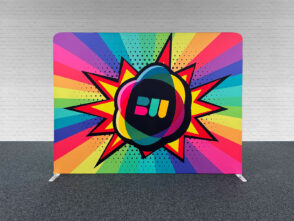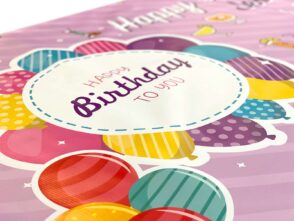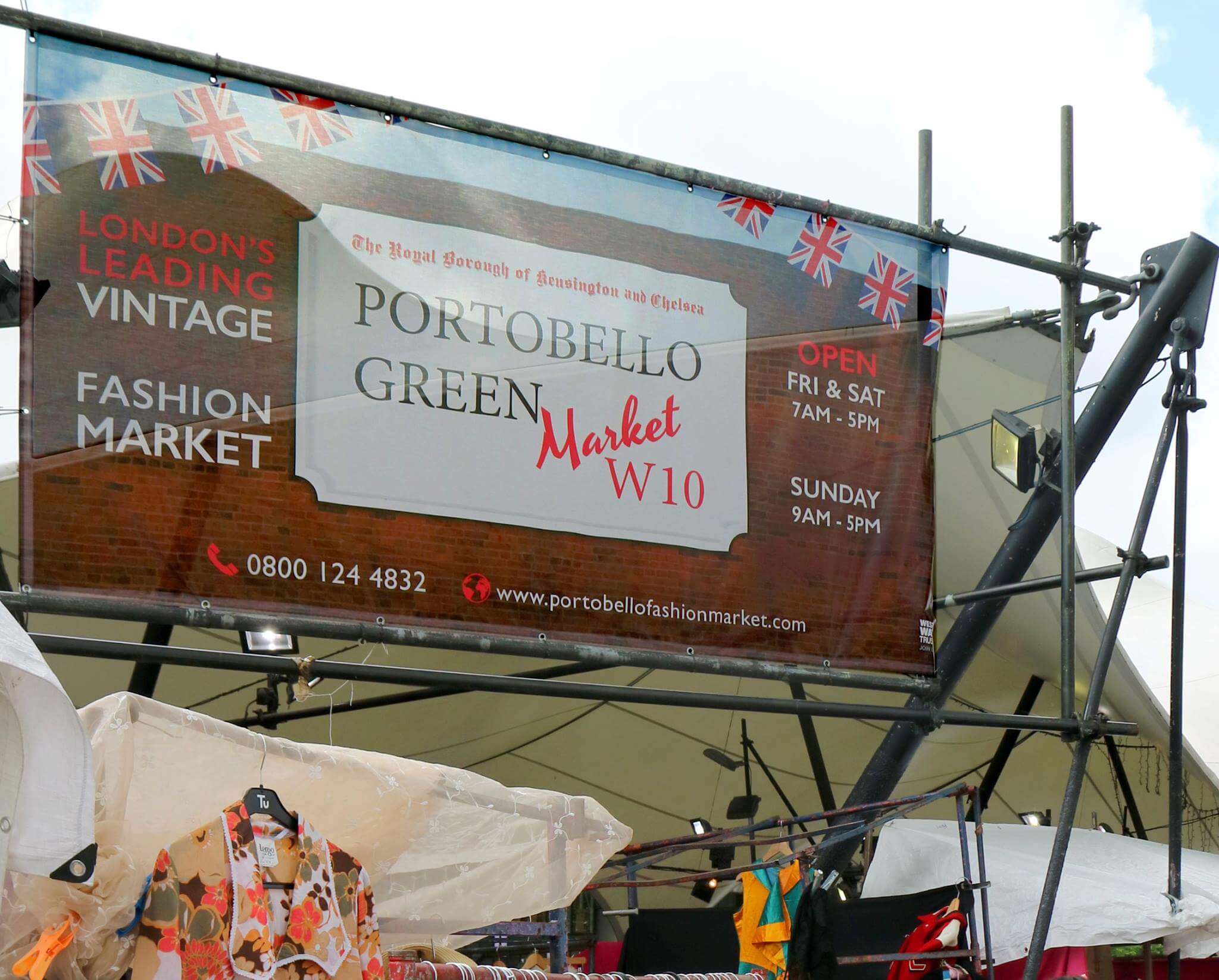Top Tips for Designing PVC Banners
PVC banners are a popular and cost-effective way to advertise a business, event, or promotion. They are durable, weather-resistant, and can be designed to suit any purpose. However, when designing PVC banners, it can be challenging to make your banner stand out from the crowd. It’s crucial to design your banner with a few key factors in mind.
How to go about designing PVC banners?
Firstly, the design of your PVC banner should be eye-catching and attention-grabbing. Use bold colours, high-quality images, and clear, easy-to-read fonts. The design should also be simple and uncluttered, with a clear message that can be understood. Whether advertising a sale, promoting an event, or simply getting your brand name out there, your PVC banner should immediately impact anyone who sees it.
Secondly, the size and placement of your PVC banner are also crucial to its visual impact. Potential customers will overlook a banner that’s too small or placed in an obscure location. On the other hand, a banner that’s too large for the space or placed in a busy area where it’s difficult to read will be ineffective. Choosing the right size and location for your PVC banner ensures maximum visibility and impact.
Understanding PVC Banners
Regarding outdoor advertising, PVC banners are a popular and cost-effective option. PVC stands for polyvinyl chloride, a synthetic plastic polymer that is durable and weather-resistant. PVC banners are lightweight, easy to install, and can be printed with high-quality graphics and text.
PVC banners are commonly used for outdoor events, promotions, and advertising. They can be hung from buildings, fences, or poles and are often used to promote sales, events, or products. PVC banners are also used for trade shows, festivals, and other outdoor events.
One of the advantages of PVC banners is their versatility. They can be printed in various sizes and shapes and customised with any design or message. PVC banners can also be printed on both sides, which makes them ideal for hanging in high-traffic areas.
When designing a PVC banner, it is important to consider the location and purpose of the banner. For example, if the banner is viewed from a distance, it should have large, easy-to-read text and bold graphics. If the banner is viewed up close, it can include more detailed information and smaller text.
Another factor to consider is the durability of the banner. PVC banners are designed to withstand outdoor conditions but can still be damaged by wind, rain, or extreme temperatures. Choosing a high-quality PVC material and properly securing the banner to prevent damage or tearing is important.
Designing PVC Banners for Maximum Visual Impact
When designing a PVC banner, it is important to consider how it will catch the attention of potential customers. When designing banners with maximum visual impact, several design elements should be taken into account:
1. Colour Scheme: The banner’s colour scheme should be chosen carefully to ensure it is eye-catching and easy to read from a distance. Bold, contrasting colours work well, creating a strong visual impact and making the text stand out. Using only a few colours is important, as this can make the banner look cluttered and confusing.
2. Font: The font used on the banner should be easy to read and bold enough to be seen from a distance. It is important to avoid using too thin or fancy fonts, as they can be difficult to read. Sans-serif fonts are often a good choice for banners, as they are simple and easy to read.
3. Message: The message on the banner should be clear and concise, with a strong call to action. It is important to avoid using too much text, as this can make the banner look cluttered and overwhelming. Instead, focus on one or two key messages that will grab the attention of potential customers.
4. Images: Images can be a powerful tool for creating a visual impact on a PVC banner. High-quality, relevant images can help convey the banner’s message and make it more memorable. It is important to choose images that are high-resolution and appropriate for the message of the banner.
5. Layout: The layout of the banner should be simple and easy to understand. It is important to avoid cluttering the banner with too many elements, making it difficult to read and understand. Instead, focus on a clear, simple layout that highlights the most important elements of the message.
Considering these design elements when creating a PVC banner makes it possible to achieve maximum visual impact and create an eye-catching and effective banner.
Choosing Colours and Fonts
Choosing the right colours and fonts is crucial when designing PVC banners for maximum visual impact. The right combination of colours and fonts can help draw attention to your banner and convey your message effectively. Here are a few tips to keep in mind when choosing colours and fonts for your PVC banner:
Colours
When choosing colours for your PVC banner, it’s important to consider the psychology of colour. Different colours can evoke different emotions and feelings, so choosing colours that align with your message and brand is important.
Here are a few examples:
Colour Emotion – Feeling
Red – Excitement, passion, urgency
Blue – Trust, calmness, professionalism
Green – Nature, growth, health
Yellow – Happiness, optimism, warmth
It’s also important to choose colours that contrast well with each other. High-contrast colours, such as black and white, can help your message stand out and be easily read from a distance.
Fonts
When choosing fonts for your PVC banner, it’s important to choose fonts that are easy to read from a distance. Sans-serif fonts like Arial or Helvetica are typically easier to read than serif fonts like Times New Roman.
Choosing legible fonts when scaled up to a larger size is also important. Avoid using overly decorative or intricate fonts that may be difficult to read from a distance.
When choosing fonts, limiting the number of fonts you use is also a good idea. You can stick to one or two fonts to avoid visual clutter and make your message easier to read.
Placement and Size Considerations
When designing PVC banners, it’s important to consider the placement and size of the banner. The banner should be large enough to be easily visible from a distance but not so large that it overwhelms the surrounding area. A good rule of thumb is to make the banner at least twice as wide as it is tall. Your banner dimensions will help ensure that the banner is easy to read and that the message is clear.
Another important consideration is the placement of the banner. The banner should be placed to be easily visible to the target audience. Could you place the banner near a busy road or intersection or the entrance to a building or event? It’s also important to consider the height the banner will be placed. If the banner is too high, it may be difficult to read, while if it’s too low, it may be obstructed by other objects or people.
When determining the placement of the banner, it’s also important to consider any local regulations or restrictions. Some areas may have specific rules regarding the size or placement of outdoor advertising, and it’s important to be aware of these before designing and installing the banner.
Finally, it’s important to consider the environment where the banner will be placed. If the banner is exposed to wind or other weather conditions, it may be necessary to use a heavier-weight material or add reinforcements, or you could opt for a mesh banner. Additionally, suppose the banner will be placed in an area with much foot traffic. In that case, it may be necessary to use a more durable material or add extra eyelets or other attachments to ensure the banner stays in place.
Call-to-Action and Messaging
PVC banners are an effective way to communicate a message to a large audience. However, it is important to have a clear call-to-action (CTA) and messaging to maximise the visual impact of the banner. A CTA is a prompt that encourages the viewer to take a specific action, such as visiting a website or purchasing.
When designing PVC banners, it is crucial to keep the messaging concise and to the point. The viewer should be able to understand the message within a few seconds. Use simple and easy-to-read fonts to achieve this, and avoid long sentences or technical jargon. It is also important to keep the messaging relevant to the target audience.
Using strong action words in the messaging can create a sense of urgency and encourage the viewer to act. For example, “now” or “limited time” can create a sense of urgency and prompt the viewer to act quickly.
Another important aspect of messaging is highlighting the benefits of the advertised product or service. The viewer should understand how the product or service can solve their problem or meet their needs. Using bullet points or a table helps highlight the key benefits and make the messaging more visually appealing.
A clear and concise call-to-action and messaging are essential for a PVC banner to have maximum visual impact. Using simple fonts, strong action words, and highlighting the product or service’s benefits, the banner can effectively communicate the message and prompt the viewer to act.
Printing and Finishing Options
When designing PVC banners for maximum visual impact, it is important to consider the printing and finishing options. The printing process can affect the quality and durability of the banner, while the finishing options can determine how the banner will be displayed and how long it will last.
One popular printing option for PVC banners is digital printing, which uses high-quality ink to produce vibrant and detailed images. This method is ideal for banners with complex designs and multiple colours. Another option is screen printing, which is better suited for simple designs with fewer colours. This method uses a stencil to apply ink to the banner, producing a sharp and consistent image.
When it comes to finishing options, eyelets are a common choice. These metal rings are placed around the banner’s edges, providing anchor points for ropes, hooks, or bungee cords. Reinforced hems can also strengthen the banner’s edges and prevent fraying. Pole pockets are another option, which allows the banner to be hung from a pole or rod.
Wind slits can be added for outdoor banners to prevent the banner from tearing or flapping in the wind. These small cuts are placed strategically to allow air to flow through the banner. Lamination is another option, which adds a layer of protective film to the banner to increase its lifespan and durability.
When choosing printing and finishing options for PVC banners, it is important to consider the intended use and environment. Outdoor banners will require different finishing options than indoor banners, and the printing method should be chosen based on the complexity of the design. By selecting the right options, designers can create PVC banners that are both visually appealing and long-lasting.
Conclusion
Designing PVC banners requires a few key considerations to ensure maximum visual impact. Firstly, choosing high-quality images and graphics optimised for the banner’s size and resolution is important, ensuring that the banner looks crisp and clear from a distance, drawing attention to the message and branding.
Secondly, the banner’s design should be simple yet eye-catching. Using bold colours and typography can help make the message stand out while avoiding clutter, and too much text will ensure the message is easy to read and understand.
Thirdly, it’s important to consider the banner’s placement and environment. Outdoor banners will be subject to weather conditions, so choosing durable materials and finishes can help ensure the banner lasts longer and looks great. Similarly, indoor banners should be placed in high-traffic areas where most people will see them.
By following these guidelines, businesses can start designing PVC banners that deliver their message and promote their brand. Whether for a trade show, event, or outdoor advertising, PVC banners can be a powerful tool for businesses looking to increase their visibility and reach a wider audience.











Leave a Reply
You must be logged in to post a comment.